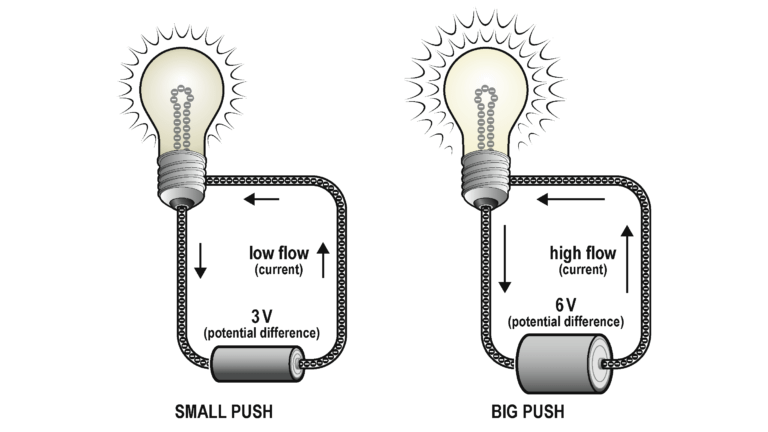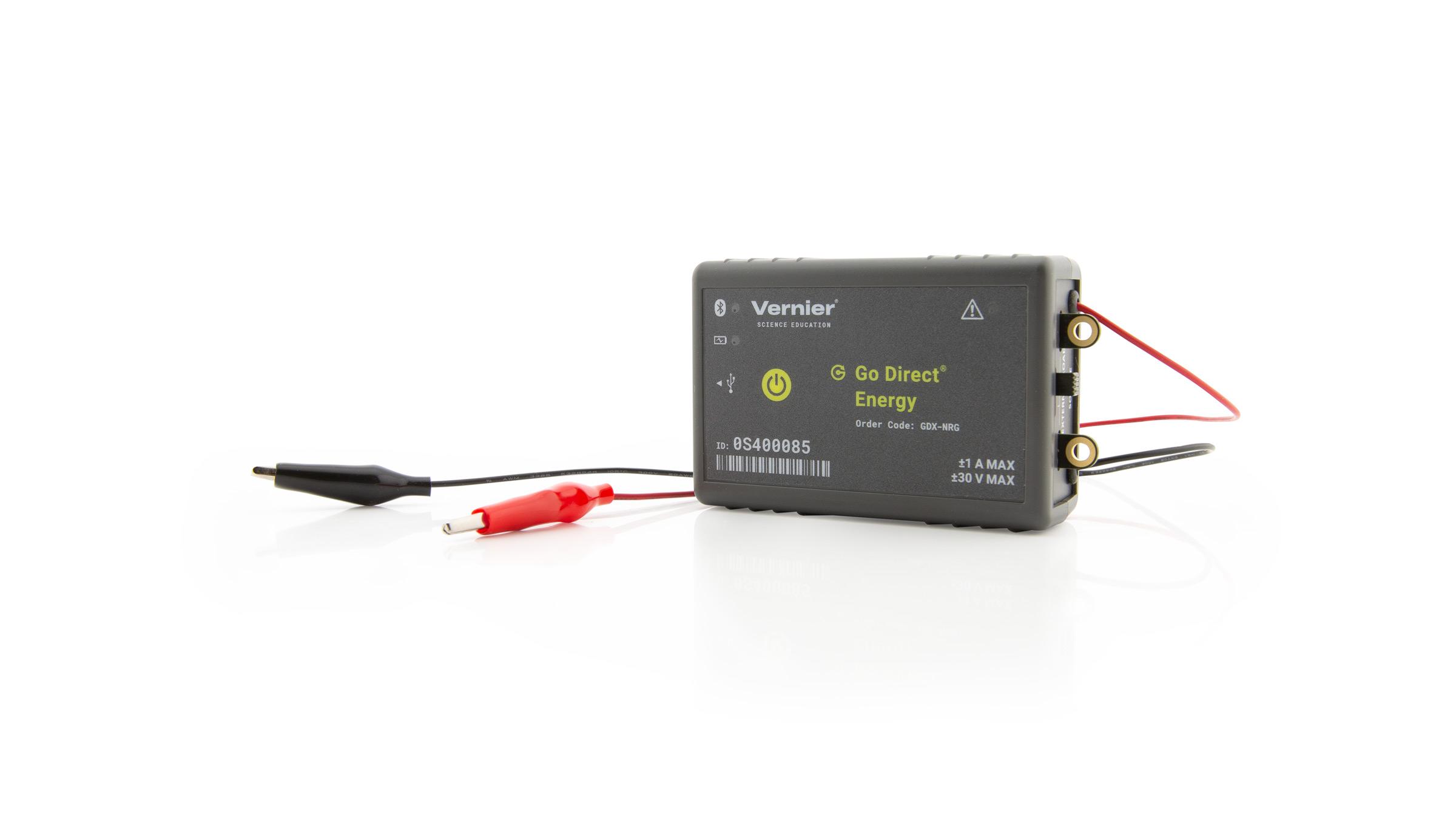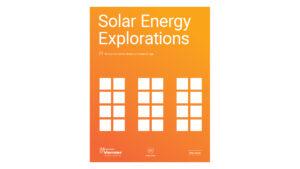
Introduction
When sunlight hits a solar cell on a solar panel, some of the electrons are knocked loose when they are hit by light energy. This transfer of energy from the sun causes the electrons to start moving through the wires connected to the panel. The movement of these electrons is what we call electricity.
In this experiment you will use an Energy Sensor to measure the rate of transforming radiant energy to electrical energy. The values that are measured are called current and potential difference (also known as voltage). Multiplying these two values together gives the energy conversion rate, which is what we mean when we say power.
Current is the measure of the flow of electrons through the wires. When the current is high, the electrons flow quickly through the wire. When the current is low, the electrons flow more slowly. Current is measured in units of milliamperes, often called milliamps for short. The symbol used to represent milliamps is mA.
To make the electrons move through the wire, they need to be “pushed.” The amount of push is called the potential difference. Potential difference is measured in units of volts. The letter V is used to represent a volt. If you use a AA battery in a flashlight, it has a potential difference of 1.5 V. The AA battery pushes enough electrons to light up the light bulb. Car batteries are usually 12 V. They push more electrons—enough to run the windshield wipers or defrost a window on a cold day.
Power is the measure of how quickly energy is converted from one form to another. In this experiment, power is measured in units of milliwatts. The symbol used for milliwatts is mW.
Power is a value that is calculated by multiplying the current and the potential difference
current (mA) × potential difference (V) = power (mW)
Energy is the amount of power produced over a period of time. The units energy is expressed in is joules or J. A millijoule, symbolized by mJ, is 1/1000 of a joule.
power (mW) × time (s) = energy (mJ)
Objectives
- Set up the data-collection equipment.
- Measure current, potential difference (voltage), power output, and energy production of a solar panel with Go Direct Energy.
- Use data-collection software to calculate mean (average) values.
Sensors and Equipment
This experiment features the following sensors and equipment. Additional equipment may be required.
Ready to Experiment?
Ask an Expert
Get answers to your questions about how to teach this experiment with our support team.
- Call toll-free: 888-837-6437
- Chat with Us
- Email support@vernier.com
Purchase the Lab Book
This experiment is #3 of Solar Energy Explorations. The experiment in the book includes student instructions as well as instructor information for set up, helpful hints, and sample graphs and data.




